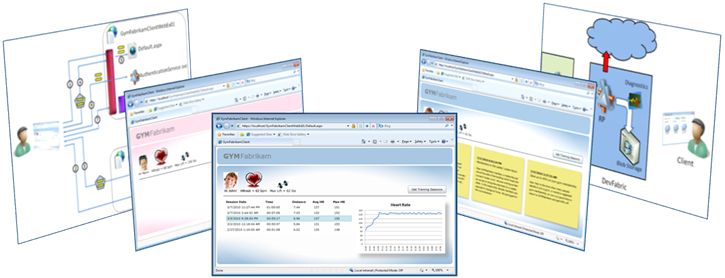Identity Developer Training Kit March 2010 update: WIF+Silverlight, WIF+WCF on Windows Azure

Are you ready to roll? I have just flipped the publish bit on the March 2010 update of the Identity Developer Training Kit!
The new release contains various fixes and improvements, but above all it contains two brand-new labs about two scenarios you asked for loud and clear: Web Services and Identity in Windows Azure and Developing Identity-Driven Silverlight Applications.
Web Services and Identity in Windows Azure
Web Services and Identity in Windows Azure describes how to use WIF with WCF roles in Windows Azure. It was developed in collaboration with the amazing Todd West from the IDA team: thank you Todd! Among the things the lab demonstrates:
• Use Windows Identity Foundation with WCF services hosted in Windows Azure
• Trusting an on-premise STS from a WCF service hosted in Windows Azure
• Using WIF & WCF tracing for a WCF service hosted in Windows Azure, taking advantage of blob storage for the traces
• Configure a WCF service to use load balancing (binding and session management)
• Deploy a WCF service secured via WIF to the Windows Azure cloud
• Switch between alternative WIF config settings without having to redeploy the entire app in the cloud
You will recognize many of the points above as frequently asked questions on the forum: the idea is that the lab will be useful also for non-Azure specific scenarios, for example if you have your own web farm.
Developing Identity-Driven Silverlight Applications
Developing Identity-Driven Silverlight Applications is one of the results of Caleb Baker’s great work on the use of WIF in Silverlight applications. You really asked in a landslide for this one, to the point that today Caleb did a session at MIX exactly about this. If you were in the room, this is the training it release he was talking about!
The lab has been written to be (as) understandable (as possible) by developers who know little or nothing about identity. Among the things the lab demonstrates:
• Take advantage of an existing identity provider (exposed via passive STS) for externalizing authentication for a in-browser Silverlight application
• Access claims values from the code of a Silverlight application and use them for user experience customization
• Handle authorization for WCF services hosted in a Silverlight website using the WIF programming model
• Take advantage of an existing identity provider (exposed via active STS) for externalizing authentication for an out-of-browser Silverlight application
• Invoke services on other domains using SAML tokens from a Silverlight application
Isn’t that really exciting? You know for how long I’ve waited to be able to use claims in Silverlight? What are you doing still here, get the March 2010 update of the Identity Developer Training Kit while it’s hot! :-)